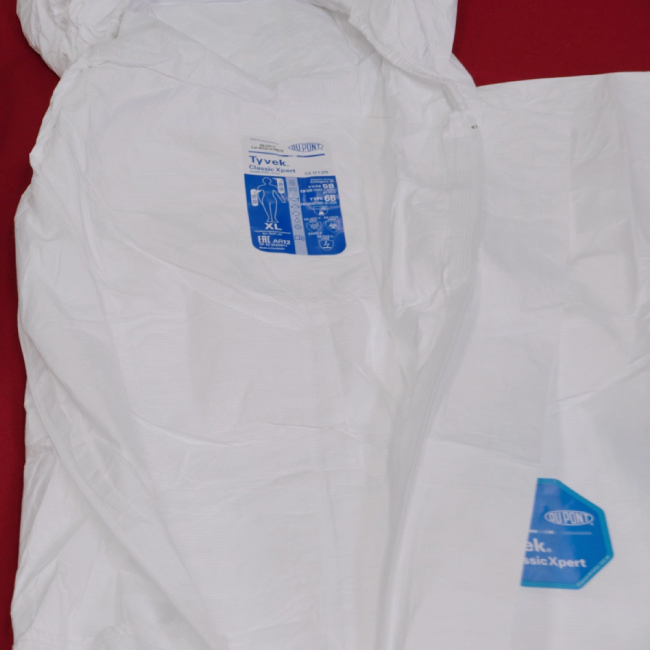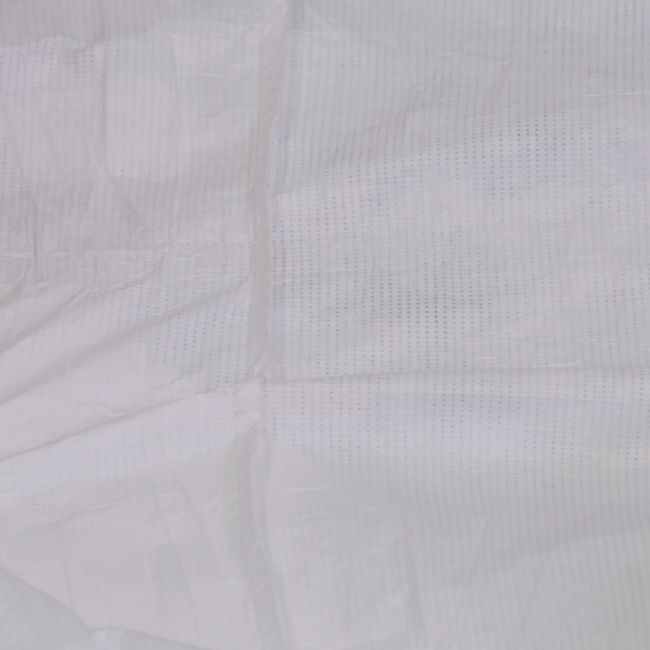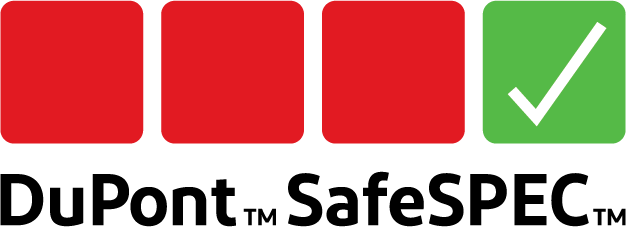How to distinguish a fake Tyvek® coverall from the original product?
Article
Tyvek® 500 Xpert coveralls have a leading position in the market and therefore became the object of illegal falsification. The manufacture or sale of counterfeit chemical protection clothing is illegal and jeopardizes the safety of workers because they do not receive the declared level of protection. If you encounter fake DuPont products, please contact us so that we can put an end to this illegal process.
How to distinguish an original from a fake garment? Watch the video.
Highlights to watch out for.

Fake garment packaging

Original Tyvek® Packaging 2013

Original Tyvek® Packaging 2017
The first thing you need to pay attention at, is that we changed the packaging design in 2017. Fake coveralls replicate our 2013 packaging.
Even if both packages look almost the same, you can easily notice the difference at the top.

Fake garment: top of the package

Original packaging of Tyvek® coverall: top surface
Instructions for use on the fake sample are visible through the bag, the forgers try to hide that they do not use the original Tyvek® material.
Sealing the packaging is also different. A package of fake coveralls is sealed with reusable double-sided tape over the entire width of the bag valve, while we use two short pieces of single-sided tape glued vertically.

Fake garment: reusable adhesive tape on the packaging

Original Tyvek® packaging: two pieces of duct tape glued vertically
The original coveralls have instructions for using a different color, it has more languages, and it is larger in size than the instructions for fake coveralls.

Fake garment is made out of MPF (microporous film)

Original Tyvek® coverall
But the main difference is that the fake coveralls are made of microporous film (MPF), while the original DuPont coveralls are made of Tyvek® non-woven high density polyethylene fabric.
The difference becomes apparent as soon as you touch both products. Tyvek® is scratch resistant, unlike MPF, which easily loses its protective properties when the top layer is damaged.

Fake garment: Zipper

Original Tyvek® zipper with extended handle
Pay attention to the difference in zippers. DuPont uses Tyvek® zippers with an extra long puller. In fake coveralls, the zipper is made of polyester with a small puller.

Original Inner Label on Tyvek® coverall
There are noticeable differences inside the coveralls. On the inside of the DuPont Tyvek® coveralls there is a label with the norms, batch number, production date and other information. The label is glued in the neck area.
Fake coveralls generally do not have an internal label in this place.

Fake garment: 2-element hood

The original Tyvek® coverall hood consists of 3 elements
The hood of fake coveralls consists of two elements, while the hood of the original Tyvek® coverall consists of three elements.

Fake garment: sewn elastic waistband

Original taped elastic for Tyvek® coverall
DuPont coveralls have a glued-in waist elastic, while fake coveralls do not, which is visible through holes that can let droplets or particles of hazardous chemicals pass through.

Fake garment: No Gusset

Original Tyvek® coverall has a 3-piece crotch area
Fake coveralls have no gusset, while the gusset in Tyvek® coveralls has an ergonomic design.
We are committed to ensuring that only DuPont manufactured, or approved PPE is marketed and sold bearing the DuPont™ Tyvek®, ProShield®, and Tychem® brand names. At DuPont we are proud of our long history of science-based innovation and safety. Our effort to provide you with quality products are integral to our mission. If you need assistance or have concerns about potential counterfeit products, please contact the DuPont Brand Protection Team at brand.protection@dupont.com or
mycustomerservice.emea@dupont.com.

Resource library
Find technical information, videos, webinars and case studies about DuPont PPE here.

